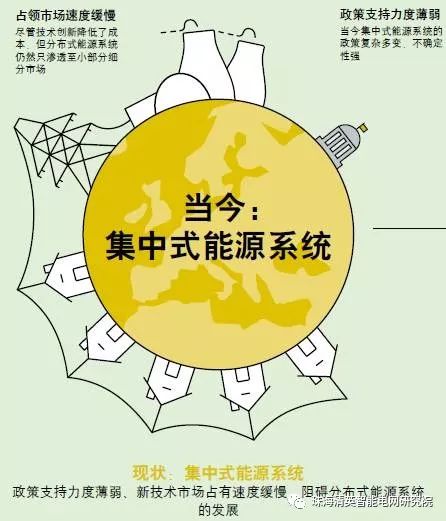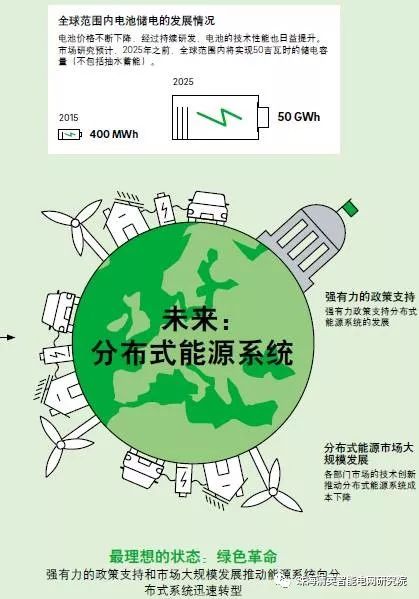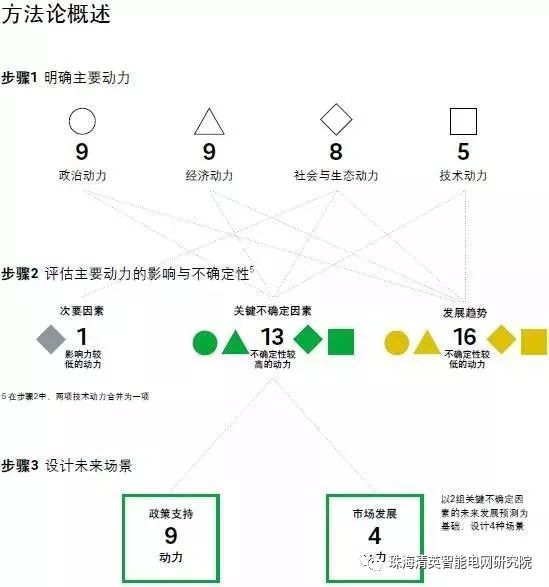The European energy system is transforming from a large centralized power station to a small localized green alternative. The cost of distributed power generation has fallen sharply in the past few years. The global spot price of crystalline silicon solar modules has declined between 2010 and 2017. 79%. However, due to the increasing uncertainty in the global energy market and the intricacies of political factors, it is difficult to predict the success of these distributed energy systems.
Roland Berger studied this and invited 50 experts to predict the European energy market by 2035. Four scenarios were designed by analyzing the key political and market variables most likely to affect the transformation of distributed energy systems. And market participants can analyze potential trends and develop appropriate action guidelines.


Four possible market scenarios
We use matrix analysis to summarize the “development trend†and “key uncertainties†from the two levels of market development and political influence, and clarify 13 key uncertainties and 16 development trends of distributed energy in Europe, and finally build There are four market scenarios.
Among them, “development trend†refers to factors with high degree of influence and low uncertainty. Experts generally agree that these factors will have an impact on the future development of various stakeholders. “Key uncertainties†include dynamic factors that may have a significant impact on energy transitions, but these factors are more uncertain.


1. Green Revolution: Strong market development and political support
Under this scenario, favorable economic and technological conditions have been further developed with political support. Carbon credit credit trading mechanisms and the calculation of external costs into energy costs will inject more economic incentives into accelerating the development of renewable energy and smart grids.
The investment growth in manufacturing assets and R&D, as well as the learning effect of rising scale, will further enhance the cost base and competitiveness of distributed energy solutions. The establishment of comprehensive policy support and shelving cost reimbursement mechanisms will drive change and reduce barriers to entry for traditional enterprises into the distributed energy market.
In this environment, the industry may be able to protect the costs of stakeholders without major changes while major changes occur. We expect that the energy market will undergo rapid changes in the “Green Revolution†scenario.
2. Fragmentation development: strong market development, weak political support
In this scenario, distributed energy must compete directly with existing centralized energy systems. Due to the lack of political support, stakeholders will face major challenges in building a market mechanism that guarantees transformation.
Affected by fixed costs, existing energy companies have higher barriers to entry into the distributed energy market, thus reducing the willingness of these enterprises to actively transform. If it is not possible to advance through technology or occupy a strong position in the competition with fossil fuels, the market penetration rate of distributed energy will be quite slow.
Compared with the “Green Revolutionâ€, in this scenario, distributed energy will develop in a fragmented model, and the highly competitive industrial sector will likely flourish. For example, in the face of difficulties in the development of other distributed energy systems, the electric vehicle industry may quickly take off. But without basic political support, even in highly regulated markets, the development of distributed energy systems will be difficult.
3. Cold market: strong political support, but market development is relatively weak
In this scenario, strong political support will greatly increase the market share of distributed energy systems, but due to the slow market development, distributed energy systems cannot sustain market share and will lose market due to lack of public support.
Due to imperfect technology, high cost, and low cost of fossil energy, distributed energy systems cannot effectively attract consumers. Although policy support can promote development to a certain extent, if the distributed energy market does not improve its own competitiveness, its level of development can only directly depend on the strength of support.
In addition, distributed energy is difficult to obtain long-term political support if its price has remained high. Any turmoil in the international or domestic economic environment may trigger consumer dissatisfaction and may even completely deprive distributed energy of public support.
4. Slowly growing markets: political support and market development are relatively weak
In this scenario, distributed energy can only occupy a negligible share of the global energy market, and development is limited to some local markets such as remote areas or simple renewable energy generation.
Due to the unstable development and the resulting reduction in capital investment, coupled with the lack of interest in distributed energy in the market, it is difficult for the industry to achieve major technological breakthroughs, and the possibility of a sharp drop in prices is slim. Distributed energy will remain the status quo and have to wait for better opportunities for development.

How to take action?
The transformation of the European distributed energy system is imperative. The success of the transformation depends on the intensity of political reform, changes in regulatory policies and market acceptance. So, what are the impacts and responses of the above four scenarios for policy makers and market participants?
Policy makers need to develop sensible laws and regulations
Policy makers decide on the ultimate direction of the distributed energy system. Recent US policies have relaxed the demand for environmentally friendly energy and promoted the coordinated development of distributed/renewable energy. European policy makers focus on the construction of distributed energy systems.
For European companies, the legal and regulatory framework established by policy makers is crucial, and the sustainability of the political goals of emissions reduction and government support programs is key to the prosperity of the company. European countries and regulatory agencies need to establish energy systems that allow markets to operate across borders.
Renewable energy projects need to increase competitiveness
To date, the European energy transformation support program has been largely subsidized and is now complemented by new policies such as the EU ETS or carbon tax that use market mechanisms to promote emissions reductions.
Another area for action is the licensing/distribution tendering process for new renewable energy projects. The current role of this process is limited. In the future, the bidding process will be expanded and market mechanisms will be used to reduce costs.
After the development of key policies, the most important measure for the transformation of distributed energy systems is to achieve an integrated market within the EU, allowing energy to flow freely within the EU, encouraging competition among energy suppliers, and ensuring optimal energy prices.
Market participants need to actively respond to new business models
With the development of renewable energy and the transformation of distributed energy, the traditional business model that public utility companies have long relied on is facing new challenges. Therefore, it is necessary to reduce investment in centralized power generation, diversify development, and concentrate energy assets. Separate from distributed energy assets and consider divesting or splitting centralized energy-related businesses.
Utilities need to work with local communities and commercial customers to tailor their own independent grids; provide customers with a complete energy storage solution; and build partnerships with large energy users who use electrical conversion, electrothermal conversion and other facilities. Second, we must boldly accept digital transformation, improve data analysis capabilities, and maximize the use of distributed energy information.
Finally, the value-added model will be a prerequisite for development. Utilities need to retain consumers by providing value-added services such as smart home solutions and increased service transparency. They also need to work with governments and regulators to create a friendly market environment.
Technology investment is the key to distributed energy systems
Manufacturers must adapt to the transformation of distributed energy systems, increase R&D investment, invest in start-ups, develop/acquire leading technologies, and collaborate with appropriate start-ups, universities and research institutions. There is also a need for more radical reform of existing models, the use of digital tools, and acceptance of new sales models such as pay-as-you-go and consumer-centric.
Create a bright future
The EU has decided to fundamentally reduce carbon dioxide emissions, and whether or not it can achieve its emission reduction targets will depend on its ability to build an effective distributed energy system. In order for distributed energy systems to produce and supply affordable energy, policy makers need to develop the right guidelines, and market participants must develop and adopt new technologies and new business models to ultimately empower users.
Disposable 600 puffs vape pen are so convenient, portable, and small volume, you just need to take them
out of your pocket and take a puff, feel the cloud of smoke, and the fragrance of fruit surrounding you. It's so great.
We are China's leading manufacturer and supplier of disposable vape pen, 600 puff disposable vape,600 puff vape pen,vape pen 600 puffs,
600 puffs vape kit,600 puff e-cigarette, and e-cigarette kit, and we specialize in Disposable Vapes, e-cigarette vape pens, e-cigarette kits, etc.
600 puff disposable vape,600 puff vape pen,vape pen 600 puffs,600 puffs vape kit,600 puff e-cigarette
Ningbo Autrends International Trade Co.,Ltd. , https://www.mosvapor.com